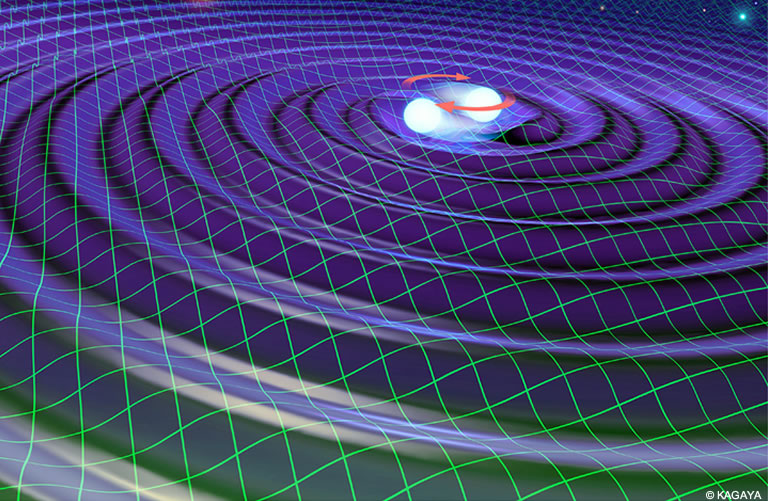On the direct detection of the gravitational waves by LIGO
| Topics
On February 11, 2016, the US National Science Foundation and the international research team announced that the LIGO Scientific Collaboration has detected gravitational waves from the merger of two black holes. Coming 100 years after the initial prediction by A. Einstein, this is the first direct detection of gravitational waves. It heralds a new era of astronomy by opening up a completely new window to the Universe.

Professor Raffaele Flaminio at the Gravitational Wave Project Office of the National Astronomical Observatory of Japan, one of the authors of the paper that appeared in the Physical Review Letters of the American Physical Society, made the following statement:

A century after the establishment of the theory of General Relativity by Albert Einstein, today the LIGO Scientific Collaboration and the Virgo collaboration announced the observation of the coalescence and the merger of two black holes made by Advanced LIGO.
The first detection on Earth of the ripples in space time due to the coalescence and merger of two black holes, more than 1 billion light years away from us, is a spectacular achievement. This event has been one of the most energetic ever observed. For a fraction of the second it was brighter than the entire visible Universe. In that fraction of a second the two black holes merging together delivered an amount of energy equivalent to three times the entire mass of the sun. They formed a new black hole weighting more than sixty times the mass of the sun. Right after the merger the oscillations of the newly formed black hole produced other gravitational waves which were observed as well.
Scientists have been working for decades to reach such a goal.
TAMA300 in Japan and GEO600 in Europe were the first gravitational wave detectors based on long baseline laser interferometers that surpassed the previous resonant bar detectors developed since the 60’s by Joe Weber, albeit with a still insufficient sensitivity. With the advent of advanced gravitational wave detectors, initially Advanced LIGO in the US, shortly afterwards Advanced Virgo in Europe and finally KAGRA in Japan, we knew that a first detection was becoming possible. We did not know exactly at which level of sensitivity this could be reached, but we knew that we were approaching the goal. Over the last two decades, advances in the instrumentation on one side, coupled with more precise predictions from theoretical models and other astronomical observations on the other, have been converging towards this first landmark observation.
Now we are there.
This is not, however, the end of the story, but just its beginning: the birth of gravitational wave astronomy. So far we have been studying the universe looking at the electromagnetic emission from stars, from galaxies and from the interstellar medium. Additional information is coming from the detection of cosmic rays and neutrinos. With gravitational waves we will be able to see cataclysmic events within stars or in the core of galaxies, which could not be observed by any other means. We will be able to study the encounters and mergers of neutron stars and black holes, to witness the birth of black holes and maybe even obtain snapshots of the early moments of our Universe. This is going to be a completely new tool to study the Cosmos and its mysteries. But it will also allow new studies of gravity and of space time under conditions never experienced before. And hopefully we will have new hints on the still unsolved connection between the theory of Einstein and the quantum world.